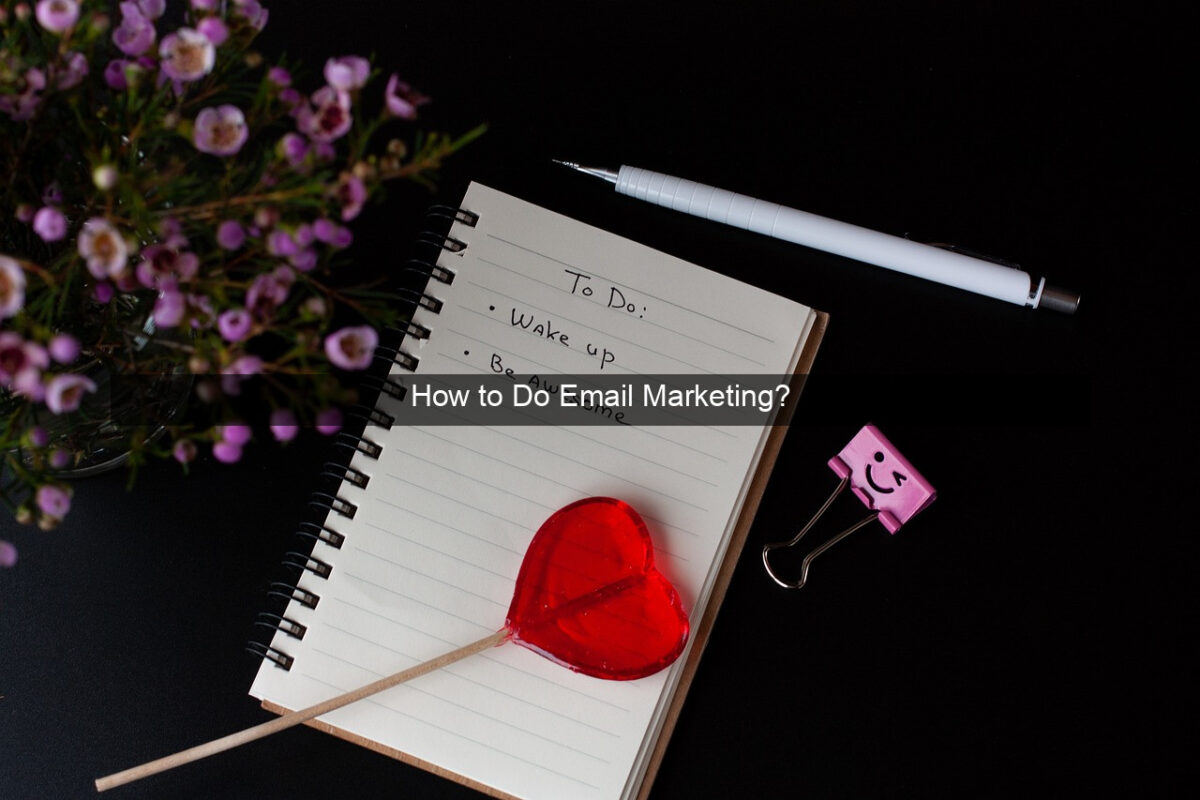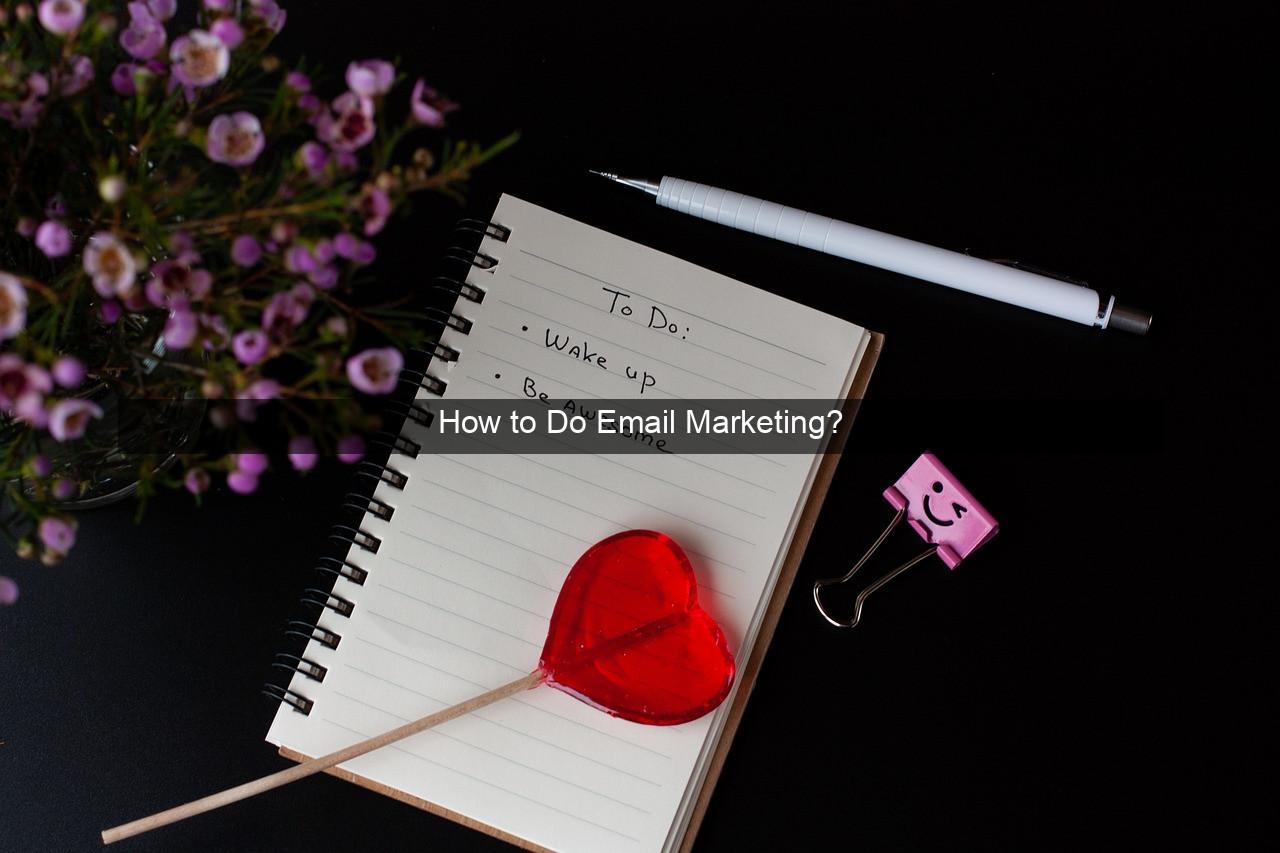How to Do Email Marketing?

- How to Do Email Marketing?
- Unlocking the Power of Email Marketing: A Comprehensive Guide
- Building a Targeted Email List
- The Importance of Organic Growth
- Utilizing Opt-in Forms Effectively
- Leveraging Social Media for List Growth
- Crafting Compelling Email Content
- Writing Engaging Subject Lines
- Designing Visually Appealing Emails
- Personalizing the Email Experience
- Analyzing Email Campaign Performance
- Key Metrics to Track
- Using Data to Optimize Campaigns
- Conclusion

Unlocking the Power of Email Marketing: A Comprehensive Guide
In today’s digital landscape, email marketing remains a potent tool for businesses of all sizes. It’s a direct line to your audience, fostering relationships, driving sales, and boosting brand loyalty. Unlike fleeting social media posts, emails reside in inboxes, providing a constant reminder of your brand. This comprehensive guide delves into the intricacies of email marketing, equipping you with the knowledge to craft compelling campaigns that resonate with your target audience and achieve tangible results. From building your email list to crafting engaging content and analyzing campaign performance, we’ll cover every aspect of successful email marketing. Learn how to harness the power of email marketing to grow your business and connect with your customers on a deeper level. This journey begins with understanding the core principles and strategies that lay the foundation for email marketing success.

Building a Targeted Email List
The Importance of Organic Growth
Building an organic email list is paramount for long-term success. Purchased lists often contain outdated or inaccurate information, leading to high bounce rates and potential spam flags. Focus on attracting subscribers who genuinely express interest in your brand and its offerings. This approach ensures a higher engagement rate and a more receptive audience for your marketing messages. Organic growth also fosters trust and builds a stronger connection with your subscribers.
Implementing effective lead generation strategies is crucial for organic list growth. Offer valuable incentives such as exclusive content, discounts, or early access to new products in exchange for email sign-ups. Place prominent signup forms on your website, optimize landing pages for conversions, and leverage social media platforms to promote your email list. The key is to provide compelling reasons for visitors to subscribe.
Maintaining a clean and updated email list is essential. Regularly remove inactive subscribers and invalid email addresses to improve deliverability and avoid spam filters. This practice ensures that your messages reach the intended recipients and maximizes the impact of your campaigns. A clean list also provides more accurate data for analyzing campaign performance.
Utilizing Opt-in Forms Effectively
Strategic placement of opt-in forms is crucial for capturing leads. Place forms prominently on high-traffic pages such as your homepage, blog posts, and product pages. Ensure that the forms are visually appealing and easy to fill out, minimizing the effort required for visitors to subscribe. Clear and concise call-to-actions encourage conversions.
Offering valuable incentives can significantly increase sign-up rates. Provide exclusive content, discounts, free trials, or early access to new products in exchange for email addresses. Clearly communicate the benefits of subscribing to entice visitors and demonstrate the value they will receive. Tailor incentives to your target audience’s interests and needs.
Respecting user privacy is paramount. Clearly state your privacy policy and assure subscribers that their information will be handled responsibly. Avoid sharing or selling email addresses without explicit consent. Building trust and transparency is essential for fostering long-term relationships with your subscribers.
Leveraging Social Media for List Growth
Promote your email list across your social media channels. Share compelling content that highlights the benefits of subscribing and directs users to your signup forms. Run targeted ads to reach a wider audience and attract potential subscribers who align with your ideal customer profile. Engage with your followers and encourage them to join your email community.
Run contests and giveaways to incentivize sign-ups. Offer attractive prizes related to your brand or industry to generate excitement and attract new subscribers. Make joining your email list a requirement for entry to maximize list growth. Promote the contest across your social media platforms to reach a wider audience.
Utilize social media analytics to track the effectiveness of your list-building efforts. Monitor key metrics such as click-through rates and conversion rates to identify what resonates with your audience and optimize your strategies accordingly. Continuously adapt your approach to maximize results and grow your email list organically.
Crafting Compelling Email Content
Writing Engaging Subject Lines
The subject line is the first impression your email makes. Craft compelling subject lines that grab attention and entice recipients to open your emails. Keep them concise, intriguing, and relevant to the email’s content. Personalize subject lines whenever possible to increase open rates.
Avoid using spam trigger words that can land your emails in the junk folder. Refrain from using excessive capitalization, exclamation points, or misleading language. Focus on providing value and accurately representing the email’s content. Test different subject line variations to identify what resonates best with your audience.
Create a sense of urgency or exclusivity to encourage immediate action. Use words like “limited time,” “exclusive offer,” or “don’t miss out” to motivate recipients to open your emails promptly. Highlight the value and benefits they will receive by opening the email.
Designing Visually Appealing Emails
Use a visually appealing email template that reflects your brand identity. Maintain a consistent design across all your emails to reinforce brand recognition. Ensure that your emails are mobile-friendly and render correctly across different devices and email clients. Optimize images and graphics for fast loading times.
Use high-quality images and visuals to enhance the visual appeal of your emails. Choose images that are relevant to your content and complement your message. Optimize image sizes to ensure fast loading times and avoid cluttering the email. Use alt text for images to improve accessibility.
Maintain a clear and concise layout that is easy to scan and read. Use headings, subheadings, and bullet points to break up large blocks of text and improve readability. Use white space effectively to create a visually appealing and uncluttered design. Ensure that your call-to-actions are prominent and easy to find.
Personalizing the Email Experience
Personalize your emails by addressing recipients by their names. Segment your email list based on demographics, interests, or purchase history to tailor your messaging and offers to specific groups. Provide personalized recommendations and content that resonates with individual subscribers’ preferences.
Use dynamic content to display different content to different segments of your audience. Tailor your messaging and offers based on individual subscribers’ interests and behaviors. This level of personalization can significantly increase engagement and conversion rates.
Track subscriber behavior and preferences to further personalize the email experience. Monitor open rates, click-through rates, and website activity to gain insights into what resonates with your audience. Use this data to refine your segmentation strategy and deliver even more relevant content.
Analyzing Email Campaign Performance
Key Metrics to Track
| Metric | Description |
|---|---|
| Open Rate | Percentage of recipients who opened your email. |
| Click-Through Rate (CTR) | Percentage of recipients who clicked on a link within your email. |
| Conversion Rate | Percentage of recipients who completed a desired action, such as making a purchase. |
| Bounce Rate | Percentage of emails that were not delivered. |
| Unsubscribe Rate | Percentage of recipients who unsubscribed from your email list. |
Using Data to Optimize Campaigns
Analyze your email campaign data to identify areas for improvement. Track key metrics such as open rates, click-through rates, and conversion rates to understand what’s working and what’s not. Use this data to refine your subject lines, email content, and segmentation strategy. Continuously optimize your campaigns to maximize results.
A/B test different elements of your emails to determine what resonates best with your audience. Test different subject lines, email designs, and call-to-actions to identify what drives the highest engagement and conversions. Use the data from your A/B tests to inform your email marketing strategy.
Monitor your email deliverability to ensure that your emails are reaching your subscribers’ inboxes. Track bounce rates and spam complaints to identify any potential issues. Implement best practices for email deliverability to maintain a healthy sender reputation and maximize the reach of your campaigns.
Conclusion
Email marketing remains a powerful tool for connecting with your audience and driving business growth. By building a targeted email list, crafting compelling content, and analyzing campaign performance, you can unlock the full potential of email marketing. Remember to personalize the email experience, provide value to your subscribers, and continuously optimize your campaigns to achieve optimal results. Embrace the power of email marketing to cultivate lasting relationships with your customers and achieve your business objectives.
What is email marketing?
Email marketing is a digital marketing strategy that involves sending emails to a targeted audience to promote products, services, or build relationships.
<details class="wp-



